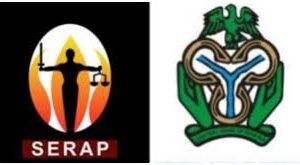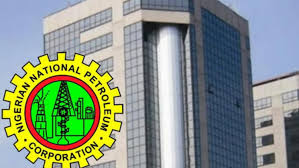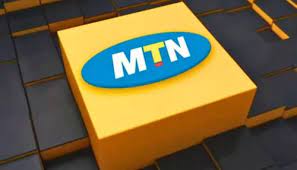Chairman and Chief Executive Officer of Starzs Investment Company Limited, who also doubles as President, Ship Owners Association (SOAN,) Engr.
Greg Ogbeifun in this interview shares the story of the company’s new vessel, MV Osanyamo and the challenges faced in the course of acquiring it and other issues.
What were the challenges faced with the acquisition of MV Osanyamo and how were you able to surmount them? The story of Osanyamo datesas far back as 2009, when Total Exploration and Production came out with a call for tender.
In coming out with a call for tender, they stipulated the tenure of the contract, which is five years and the generic specifications of the type of ship that they were looking for to perform certain functions and services.
All bidders went out, put on their thinking cap to design ships that they thought could meet the requirement of the specifications and that became the technical bid but I am not sure all the bidders actually had existing vessels.
We were bidding against the multi nationals; the bidding process was long and extensive because ultimately, it had to be finally approved by the board of Nigerian National Petroleum Corporation (NNPC).
After the whole exercise which lasted about two years, we came out as the most commercially and technically qualified company and NNPC approved the contract finally in 2011.
At that time, the Cabotage Vessel Financing Fund (CVFF) was much talked about, and the guidelines for the disbursement of the fund had been prepared by the Honourable Minister of Transport then and approved by the National Assembly as required by the act.
Four primary lending institutions were nominated and those of us who had projects to finance were all asked to put in our application through our own nominated bank.
Applications went to NIMASA and it forwarded it to the bank we nominated amongst the four.
The banks did the credit analysis and all the checks about the project and made their recommendations.
After several months of going forth and backwards and summiting documents, six companies were nominated as been eligible to access the fund and the six companies were sent to Abuja by NIMASA as required by law for the ministerial final assent and approval for disbursement.
Unfortunately, that was not to be because the minister then, instead of approving and disbursing as he had the legal right to do, took it to the Presidency and that was the end of the story up till now.
It was particularly disappointing considering that ship owners contribute two percent of their earnings into that fund.
As at date, I know that Starzs Investment has contributed over $3million into CVFF fund since it was established.
So naturally, one would have thought that it was an opportunity to get help to acquire additional tonnage, to employ more people, create training opportunities and add to the economy but that did not happen.
The CVFF Chairman and Chief Executive Officer of Starzs Investment Company Limited, who also doubles as President, Ship Owners Association (SOAN,) Engr.
Greg Ogbeifun in this interview shares the story of the company’s new vessel, MV Osanyamo and the challenges faced in the course of acquiring it and other issues.
Ogbeifun fund aggregated was to cost no more than eight to nine percent interest but when we lost that, we approached the commercial banks and after a further three years,finally got one of themto agree to finance the project.
We were supposed to come with equity and this we had negotiated to build through the sinking fund which is okay with the bank but they needed a guarantor.
The Nigerian Content Development Monitoring Board (NCDMB) after one year of running around, agreed to guarantee the equity portion of the funding.
When delays continued due to non-availability of funds to start the construction of the vessel, we exceeded the time given for the provision of the asset to Total.
The vessel was supposed to have been built within 30 months of the contract awarded in 2011 but that could not happen because of the delay but we kept engaging Total and letting them know what is going on and eventually they gave us five percent of the contract value as an advance to assist with the funding.
Do you think there is need for ship owners to continue contributing into the CVFF since the fund seems inaccessible? We cannot stop paying because that has to go the national assembly first for them to repeal the law.
If NCDMB who collects one percent of our revenue can come out boldly to announce how much they have accrued in their funds which is roughly about $700 million, and that they had funded six companies on their websites, so why shouldn’t NIMASA do the same thing and put the CVFF fund in the public domain? Who are the people they funded, there has to be accountability? SOAN will have to engage NIMASA to give account of our funds.
We don’t want to stop paying but NIMASA has to able to disburse.
It is not necessarily acquiring new ships that matters but to help those who are already in business to stay in business.
NIMASA is not thinking in that line, rather they are busy acquiring floating dock.
What do you think the government can do to encourage other indigenous ship owners to own ships? At the expense of modesty, I would not want to see it as a one-sided effort.
Yes, there is a role the government can play but there is also a role the operators should play.
I think ship owning companies that have established good corporate governance in their system, should have a structure that operateson international standards because we are dealing with international bodies, the IOCs.
Every ship owner should first try to ensure that their businesses are such that can attract support and patronage because that was the first hurdle we needed to overcome.
At the call for tender, all the pre-requisites for qualification to even bid is on the ship owner.
The ability to understand the business is also very important.
For example, when they came out with the generic specifications, we were able to take that and work with the ship yard, making inputs to ensure that what is being designed meets the standard and that is why you find out that the ship is the first and largest Damen has ever built because we made input.
It is good the ship owners put together their entity to have those experts come in and be part of their process.
That is most important, because for the IOCs to take you seriously, you have to also show that you can deliver.
Don’t you see the acquisition of the floating dock by NIMASA as a step in the right direction that would help save capital flight? I read in the pages of newspaper that NIMASA is bringing a floating dock, and I ask myself is NIMASA going into ship building or repairs themselves now? Does the NIMASA Act stipulate that they can establish ship yards? Do they have the expertise to run shipyards? Somebody needs to tell us what they plan to do.
May be instead of buying the floating dock, they should have found out the ship yards that are already existing in the countryand see how they make them grow bigger.Right now, a lot of Nigerian ship owners are still leaving this country to go outside to look for docking facilities.
In an ideal world, the money that was used to build that the floating dock is a bad investment.
It was not well thought through.
Where is NIMASA going to operate it from? Where are the trained skill personnel that will operate it? That money should have been given to ship owners to buy ships and generate revenue and give back to them.
Some of us are still waiting to know what NIMASA wants to do with that floating dock.
Source: Ship and ports news



